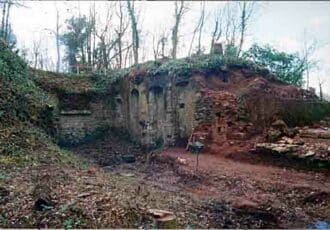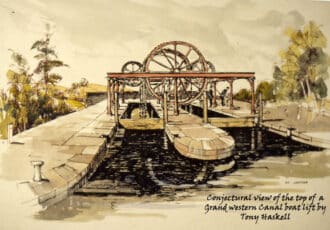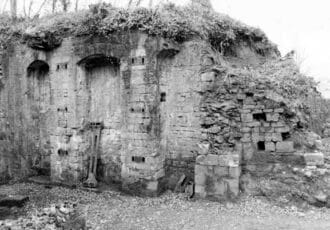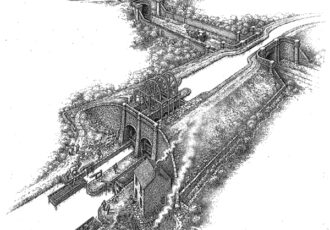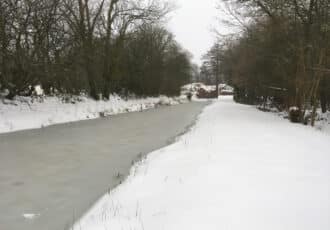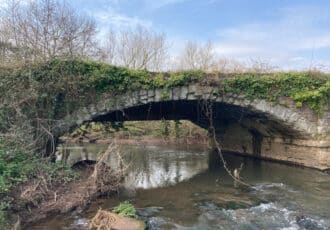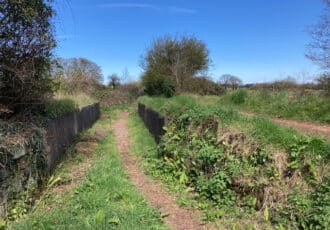The Grand Western Canal & Boat Lift
Below is a brief history & description of the Grand Western Canal at Nynehead including the Nynehead Boat Lift. Find out more about the history of the Parish in the online Nynehead Archive
The Grand Western Canal
James Brindley first surveyed the Grand Western Canal in the 1760’s as part of a grand scheme to link the Bristol and English channels in order to save shipping from the dangers of navigating around Land’s End. An Act of Parliament was eventually obtained in 1796, but work did not commence until 1808 when there was a revival of interest and much financial activity. John Rennie begun surveying the line in 1794, and was then appointed engineer in 1810 when construction began at the summit level near Holcombe Rogus, working towards Tiverton. The eleven-mile section was opened in 1814 but engineering difficulties had exhausted the Company’s funds and the plan to link with Taunton was temporarily shelved. In 1827 the Bridgwater and Taunton Canal was opened giving fresh impetus for extension of the Canal to Taunton.
James Green’s proposal to complete the 13 mile extension from Lowdwells to Taunton with a tub-boat canal was accepted and work began in 1831. It incorporated an inclined plane and seven vertical boat lifts to cope with the 270ft change in level. The Canal finally opened to through traffic in 1838.

Newer forms of transport were to be the Canal’s undoing. The Bristol and Exeter Railway reached Exeter in 1844 with a branch to Tiverton in 1848. Canal revenue fell dramatically. In 1854 the Canal was leased to the railway that then bought it out in 1865. The Somerset section was closed shortly afterwards and the land and machinery sold by 1867. The carriage of limestone and roadstone continued on the Devon section until 1925, thereafter the Canal remained derelict until 1971 when Devon County Council took over the ownership, designated it as a Linear Country Park and commenced restoration.
Nynehead Boat Lift
The remains of the Nynehead Boat Lift are of historical significance as it is the only one of the seven that includes a substantial amount of masonry. The image below shows the lift in 1999, after two years clearance work.
These lifts were certainly the first in Britain, and possibly the world, to be commercially successful and operated for nearly 30 years. In their day they were at the forefront of technology. One has to respect the courage and imagination of the Engineer and Proprietors in building such mechanisms when materials technology and iron founding were in their infancy. There is sufficient remaining of the lift at Nynehead to give an idea of what the structures must have looked like.
The operating machinery was removed shortly after closure in 1869 but a detailed description of the operation together with engineer’s drawings still exists. James Green’s lifts worked on a simple balance principle. Later generations of canal lift were hydraulically or electrically operated. Green’s tub boats carried 8 tons of cargo; there are now lifts in Europe that can accommodate 1350 ton boats.
Nynehead Lift Working Party
The monthly Nynehead Working Party has been running since Denis Dodd set them up in the late ’90s when work took place to uncover the rich and vibrant history of this section of the Grand Western Canal. These “parties” have continued since then, every second Saturday of the month starting at 10am.
The working party operates in association with the Friends of the Grand Western Canal and often undertakes maintenance work on other sections of the canal in Somerset – namely Jayes Cutting.
We welcome all ages and abilities to both the Friends of the Grand Western Canal and to the Nynehead Working Parties, please contact us for further information.
